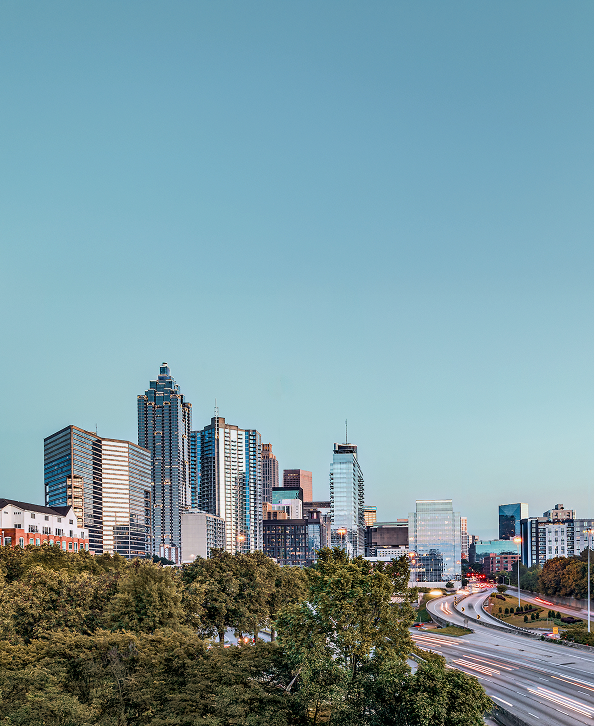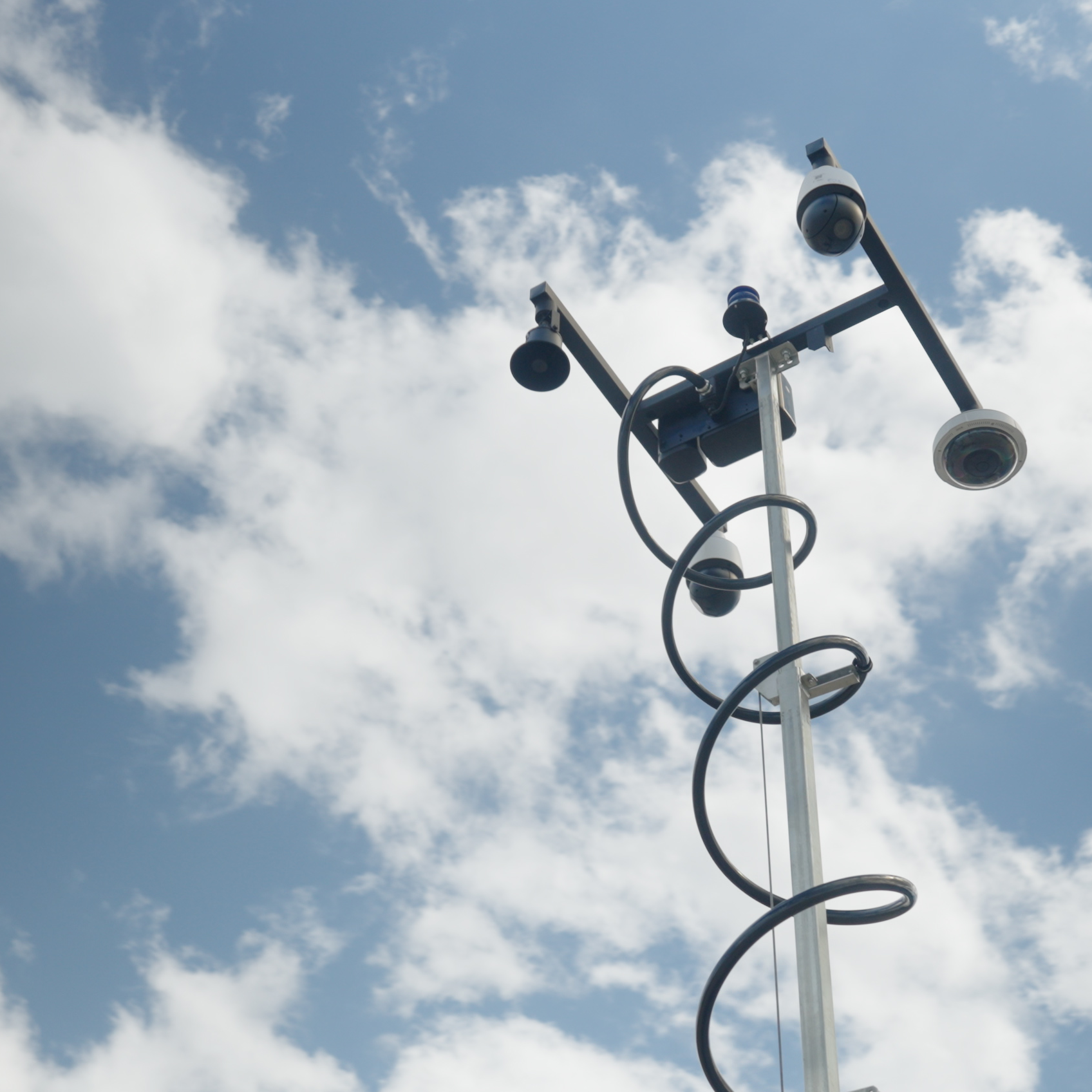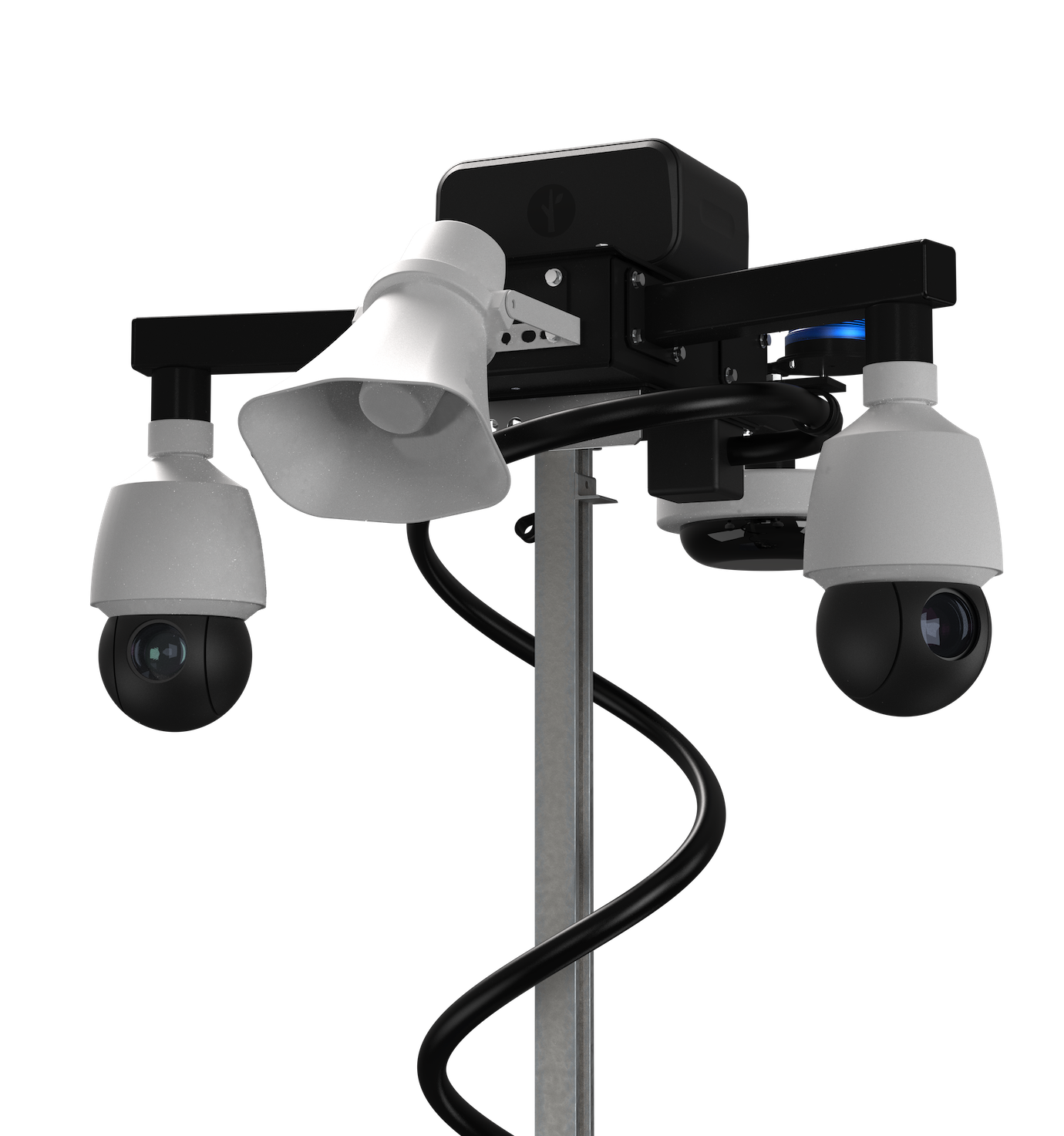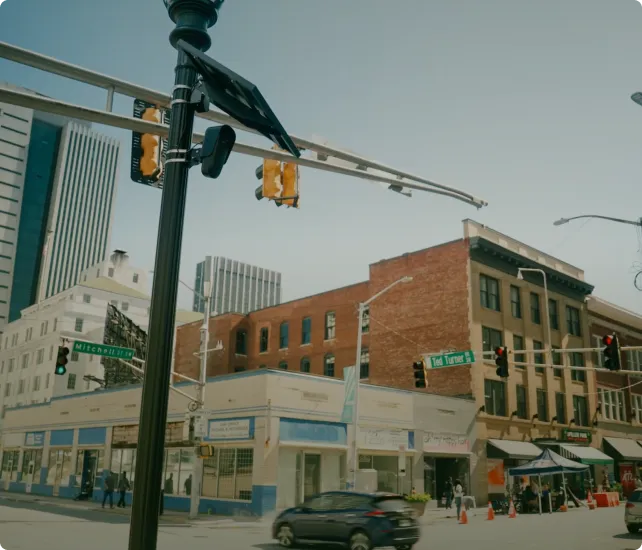


How Technology Can Help Reduce Gun Violence
Gun violence is rising—but tech like license plate readers (LPRs) offers real solutions. Learn how ALPR helps law enforcement solve and prevent gun crime.
Gun violence: an American epidemic
While U.S. citizens celebrated Independence Day, an opposing phenomenon was also taking place across the country. On the July 4th weekend of 2021 – a celebratory weekend that for many served as a marker for the end of a deadly pandemic — the equally-disturbing epidemic of gun violence was rampant.
The holiday weekend saw over 500 shootings, leaving more than 230 people dead and over 600 injured. After 51 people were shot in two days in New York, Governor Andrew Cuomo became the first elected official to declare gun violence a statewide “disaster emergency.”
While this was a particularly deadly weekend, gun violence is simply more common in the U.S. than anyone would like. The U.S. experiences far higher rates of gun violence and deaths than any other wealthy country. U.S. deaths from gun violence are more than 8 times more common than in Canada and more than 100 times than the UK.
And though the accepted narrative portrays gun violence as an urban and inner city issue, the truth is more complicated: shootings harm every corner of the U.S., from cities to suburban communities to rural towns.
The root causes of gun violence — an increase in firearms, access to illegal firearms, lower levels of police in large cities — are extremely complex. But, there are proven and effective tools to combat its harmful effects. Ethically-built, effective technologies like Automated License Plate Recognition (ALPR) help law enforcement fight gun violence both proactively and reactively, solving gun crime more quickly and accurately while getting guns out of the hands of those who should not have them.
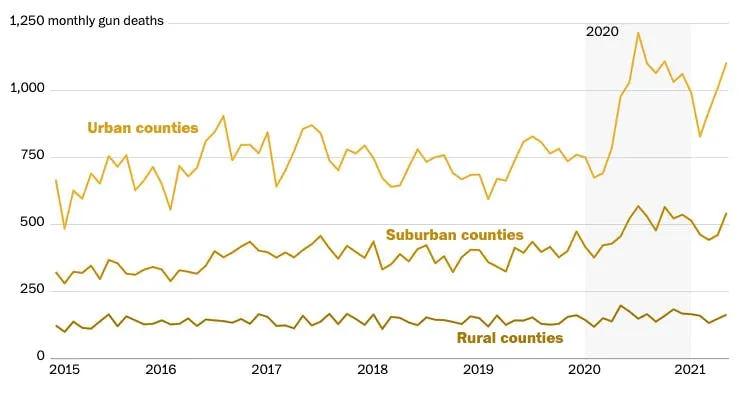
Gun violence rates in communities across the U.S., Washington Post
Is gun violence really increasing?
In a word, yes — gun violence is increasing. After a tumultuous year of a deadly pandemic, protests that rocked the country, and a dramatic recession and accompanying unemployment spike, 2020 was also the deadliest year of gun violence in at least two decades. Homicide rates are up as much as 30% higher in parts of the U.S., and aggravated gun assault rates were 6% and 8% higher, respectively, over the previous year [National Commission on COVID-19 and Criminal Justice].
In an even more troubling turn of events, as the country emerges from the ravages of the COVID-19 pandemic, the violence is not abating. 2021 is shaping up to be an even more deadly year than 2020. According to the real-time Gun Violence Archive, in the first five months of 2021, gunfire killed more than 8,100 people in the U.S. — 54 lives lost per day, 14 more than the average of the previous six years.

Gun violence is being driven by an increase in illegal firearms and a dwindling of police resources
There are many factors, none comprehensive, involved in the gun violence issue. One is the recent surge in firearm purchases, driven by the aforementioned pandemic uncertainty and socioeconomic and political climate. Researchers at the University of California, Davis Violence Prevention Research Program found that the spike in firearms purchased during a three-month period in 2020 — a 64% increase over expected levels — was associated with a statistically significant increase in gun violence.
Though legally-registered gun owners are not typically the culprits involved in violent crime, more firearms means more guns available to be obtained illegally — passed amongst organized street groups, stolen during residential or auto burglaries, or purchased from underground vendors. The Bureau of Alcohol, Tobacco, Firearms and Explosives reports that 13,173 firearms were reported stolen in 2020 — and acknowledges that many more are not reported at all. When firearms are stolen from a home or store, the ATF says that “investigative experience shows that each of those stolen firearms is almost assuredly destined for criminal use in the immediate area of the theft.”

There is also a rising market for “ghost guns.” Ghost guns are fully functional firearms sold as kits and assembled at home — because they are not technically finished when they are sold, they can be shipped directly to consumers without registering a serial number, rendering them untraceable if used in a crime. Ghost guns are an easy way for individuals to bypass the national background check required when purchasing a registered firearm.
The ATF and FBI report that ghost guns are increasingly being used in violent crimes across the country, including in mass shootings and domestic terrorism attacks. Almost every state has seen an increase in ghost gun recoveries; in some states, they have tripled.
Lastly, police departments across the country are struggling to recruit applicants amidst social upheaval and anti-law enforcement protests. Agencies have record numbers of open roles, driven by low police morale and fear of pursuing a job that carries as heavy a weight as policing does right now. Additionally, pandemic-battered city budgets have forced some departments to cut recruiting and hiring efforts involuntarily. Since we know that every additional officer on patrol reduces homicide, rape, robbery, and other serious crime simply through the powerful effects of deterrence, it follows that this dearth in officers is leading to a dangerous violent crime spike.
The economic and social costs of gun violence
Beyond the devastating human costs, gun violence places an economic burden on all citizens. The Urban Institute estimates that treating gunshot injuries cost the health care system $630 million in a year (2010). The total costs of healthcare, law enforcement, prosecution and criminal justice, psychological harm, productivity loss, and other associated issues is estimated to be as high as hundreds of billions each year.
There’s also the harm inflicted on individual communities where gun violence occurs. In the same Urban Institute study, researchers found that in one city, a gun homicide was statistically associated with five fewer job opportunities in that area the next year. In another city, every gun homicide was statistically associated with two fewer retail and service establishments the next year. When shootings happen, people avoid the area, shops and restaurants close, and the neighborhood suffers.
Medical professionals and academics have consistently called gun violence a public health crisis that leads to lifelong mental and physical health issues for victims and their families.
But despite the research and clear findings of researchers and professionals, gun violence continues to rise. What is going on?
Why is gun crime hard to solve?
The presence of firearms often makes a crime harder to solve. Assaults and homicides committed with guns likely have less evidence available at the scene of a crime than those committed in closer proximity to the victim (stabbing, strangulation). Shootings are typically executed from further away, sometimes from behind or from a moving vehicle.
In areas that see a disproportionate amount of street violence or organized criminal activity, witnesses are often hesitant to provide information to law enforcement. Fear of retaliation (common in the case of organized street groups) or a personal connection to the offender may block cooperation with police.
A Washington Post article describes what happens in cities where shootings and homicides caused by guns go consistently unsolved.
Police blame the failure to solve homicides in these places on insufficient resources and poor relationships with residents, especially in areas that grapple with drug and gang activity where potential witnesses fear retaliation… All agree that the unsolved killings perpetuate cycles of violence in low-arrest areas.
There’s hope: technology can help address gun violence
There are a host of public safety technologies that can directly and indirectly contribute to clearing violent crime cases associated with firearms. Policing efficiency tools like automated case/evidence management and discovery systems, and community response platforms such as anonymous incident reporting have both engendered positive responses from citizens and law enforcement.
Amongst the technologies that directly address gun crime, acoustic-based gunshot detection systems have shown to be highly effective at improving police response times, triangulating more gun crime, and ultimately, preventing such incidents. These systems are designed to automatically detect, verify, and notify law enforcement when and where a firearm is discharged. In an analysis of one leading vendor, the NYU School of Law Policing Project found that one city that had implemented a gunshot detection system saw police address four times as many gunshot incident alerts than in comparable areas without. The National Institute of Justice also found that these systems have a deterrent effect in high-crime areas.
Other solutions utilize artificial intelligence (AI) and computer vision (CV) to detect firearms and subsequently alert law enforcement. These solutions often plug into existing CCTV or traditional surveillance camera systems, so are particularly useful in areas where cameras are already present, like large venues, school campuses, etc.
While these solutions are efficacious in helping solve crime following gunshot incidents, it is important that we focus on more than locating the suspect after a gun has already been fired. For example, while acoustic gunshot detection may reduce police response times, its most valuable byproduct may well be the deterrent effect it has on overall gun crime. In order to truly reduce firearm crime, we must also focus on technology use cases designed to reduce overall crime through proactive policing.
ALPR technology and gun violence — Why the license plate matters
Automated license plate readers (ALPR) and accompanying alert and evidence collection platforms are designed to enable proactive public safety. When deployed strategically around an area, ALPR cameras have two primary functions. They capture vehicle details and license plates, so when a crime is committed, law enforcement have a solid lead they can follow during an investigation. They also work proactively to alert law enforcement in real-time of known wanted suspects in an area.
Let’s address the former use case first. Why is a license plate a useful lead to provide law enforcement following a crime?

Vehicles often enable crime. Consider drive-by shootings, a particularly terrifying gun-related crime as it often results in not only the death or injury of the intended target, but of innocent bystanders as well. A U.S. Department of Justice analysis of homicides in San Diego over 4 years showed that 10 percent of gun homicides were drive-by shootings.
Determining the license plate and characteristics of the offending vehicle is therefore critical to solving many of these gun-related crimes.
Proactive policing through ALPR usage takes guns off the streets and reduces overall firearm-related crime
Now, let’s examine the second use case of ALPR cameras: providing law enforcement with a real-time alert when a wanted suspect passes a camera. Rather than waiting for crime to occur, ALPR cameras allow police to utilize a Hot List integration with national and state-level crime databases, like the FBI’s NCIC database. Law enforcement can then dispatch officers as soon as a wanted suspect passes a camera, initiating a stop or pursuit and investigating or detaining the suspect.

Agencies approach gun violence with a solutions-focused mindset
Agencies across the country are coming to this same conclusion: License Plate Readers are a smart tool to fight increasing firearm violence.
After months of increased gun violence cases, the Rantoul, Illinois Police Department has decided to install LPRs around the town to address it. Deputy Chief Justin Bouse said that a lack of witness cooperation following these crimes has created a need for better tools to obtain objective evidence.
“We’re hoping with this technology, we’ll be able to kind of close up some of these holes that are sometimes left unsaid,” Deputy Chief Bouse said.
Across the country, the mid-sized city of Vallejo, California just experienced its fifth homicide of 2021. Already a Flock Safety customer, Vallejo Police Chief Shawny Williams has responded by calling for more cameras to combat the violent crime.
Chief Williams said: “ALPR cameras could lead us to a violent criminal, help us make an arrest, give the victim’s loved ones closure, and give our community a peace of mind knowing arrests have been made.”
Gun violence is an exceptionally complex issue that will require solutions from government, citizens, and private companies. Technology like LPR cameras can offer law enforcement a proven way to solve more gun-related crime, take unauthorized or illegal guns off the streets, and reduce crime in communities that are suffering the wide-ranging consequences of this public safety challenge.
You can learn more about the features of Flock Safety’s LPR cameras geared specifically to law enforcement here.
Explore More





Contact us
Discover how communities across the country are using Flock to reduce crime and build safer neighborhoods.

.webp)


